The Best Deals on Camping, Backpacking and Outdoor Gear [June 2025]
Watch this video directly on YouTube.
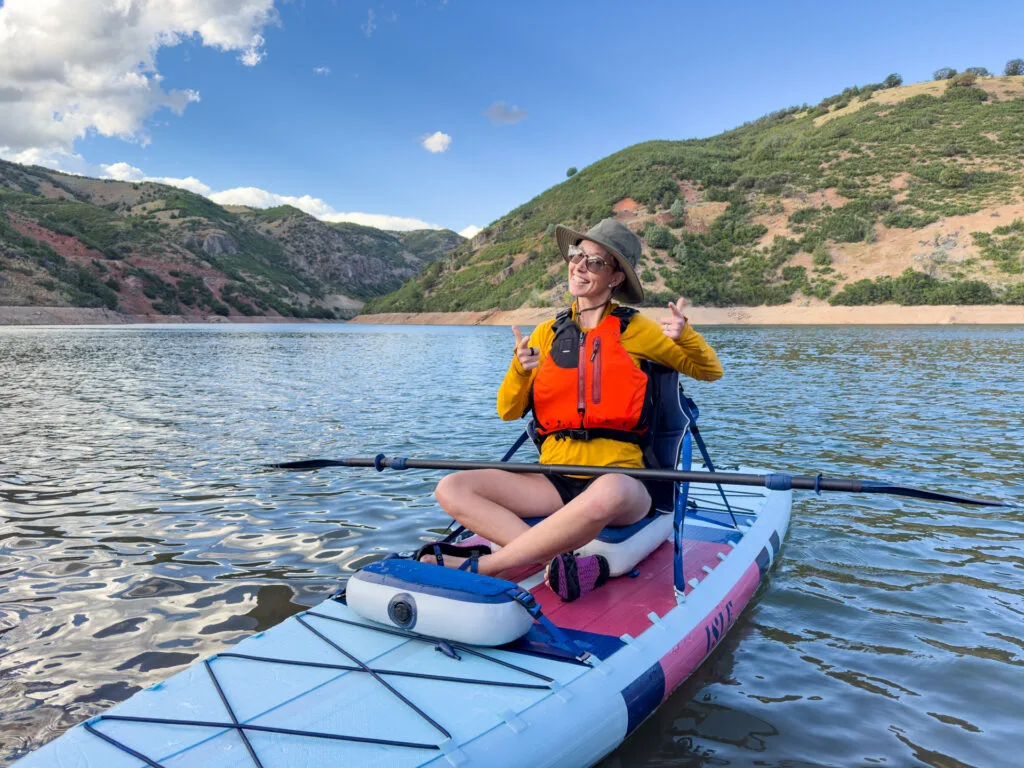
I love being in, on, or near water. Often, I’m not even that particular about HOW I get there, as long as my sandals are on and there’s a life jacket in my trunk. That said, there are plenty of times when I very much have an opinion about the vessel that makes cruising on a lake/river/intracoastal possible. Depending on whether I’m planning a long trip or a lazy afternoon where I just want to float with friends, I’m definitely going to lean toward either a kayak or SUP (stand up paddleboard). Because when choosing a Kayak vs SUP, which one is right for you really depends on what you want from your time on the water.
What’s the big difference between a SUP and a Kayak, anyway? We’ll break down what makes them such unique pieces of gear, what outdoor adventures each is typically best suited for, why you might want to choose one over the other, and if the new Isle Switch Compact truly bridges that gap.
The Switch Compact is a recently released inflatable SUP that might just be the best of both worlds: a SUP with an attachable seat and a convertible paddle that transforms it into something very much like a kayak. But sometimes when you attempt to make one thing do two jobs by tweaking the design to make it serve more than its original purpose, both functionalities suffer (I’m looking at you, spork). So we’re not only gonna break down the differences between kayaks and paddleboards, we’re also going to discuss whether the new Isle Switch Compact (a smaller version of the original Switch) performed as well as both a SUP and a kayak as the marketing promised.
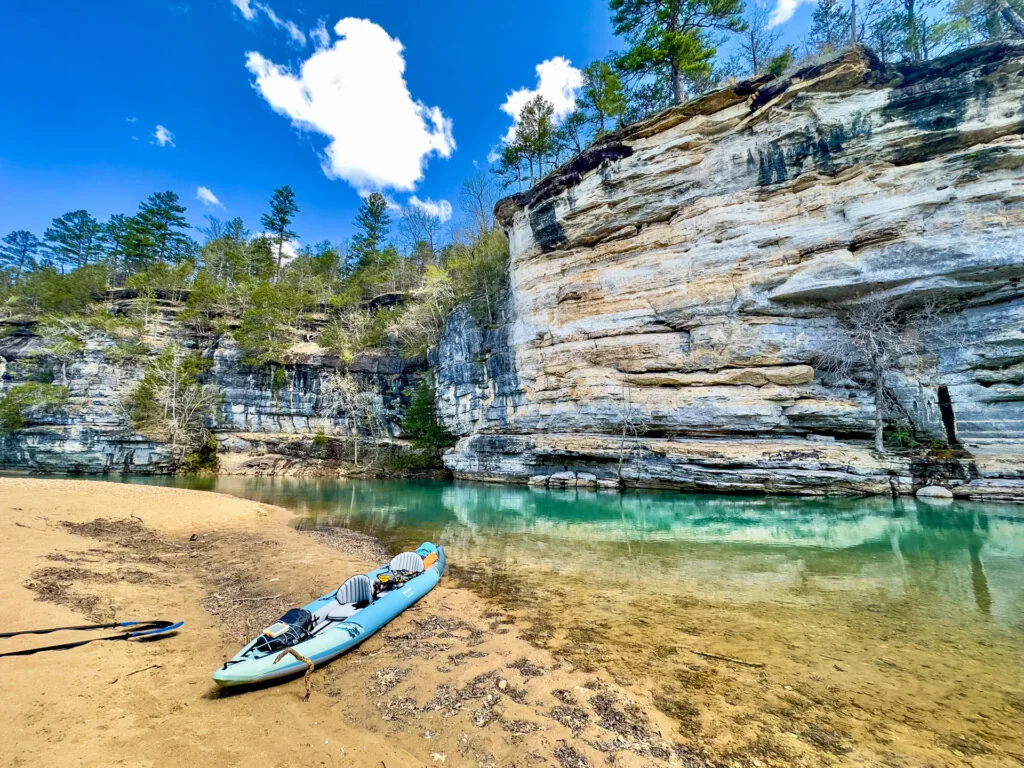
Kayak Vs SUP
Don’t have either a kayak or SUP (yet)? Here are the differences that make them each unique.
Kayak
A kayak is designed more like a traditional boat with a pointed bow and stern (front and back), usually a skeg (a stiff rudder-like object on the bottom) that helps keep it moving in a semi-straight line, and low sidewalls that keep water out. All of this makes it swift and stable on different types of water. There’s a seat and foot braces for each passenger that makes for both comfortable and efficient paddling. Both are typically located below the level of the sidewalls (though there are also sit-on-top kayaks with no sidewalls).
There are different types of kayaks, including easily maneuverable whitewater kayaks for fast-moving water and rapids, long and narrow kayaks for moving fast on calm water, and in-between river kayaks that are often around 8-11 feet and designed for a variety of bodies of water, from oceans to rivers to lakes. There are inflatable kayaks and hard-body kayaks, even folding kayaks so you can choose which is right for you (watch our comparison of a folding kayak vs inflatable kayak here).
As for the paddles, they’re double-sided, meaning unlike with a canoe or SUP, there’s a paddle on both ends, which means you never have to switch hands or switch sides you’re paddling on. That’s another feature that makes kayaking a more efficient (and faster) way to move on water.
Pros:
- More storage space for gear (inside and outside the boat).
- Faster and more efficient body design.
- You’re less likely to accidentally fall in the water during activity.
- More suitable and stable in more types of water (river, lake, ocean, etc.).
- More supportive seat.
- More efficient paddle and paddling motion.
Cons:
- Can’t stretch out or change positions.
- Harder to get in and out if you’re swimming frequently.
- Forget trying paddleboard yoga.
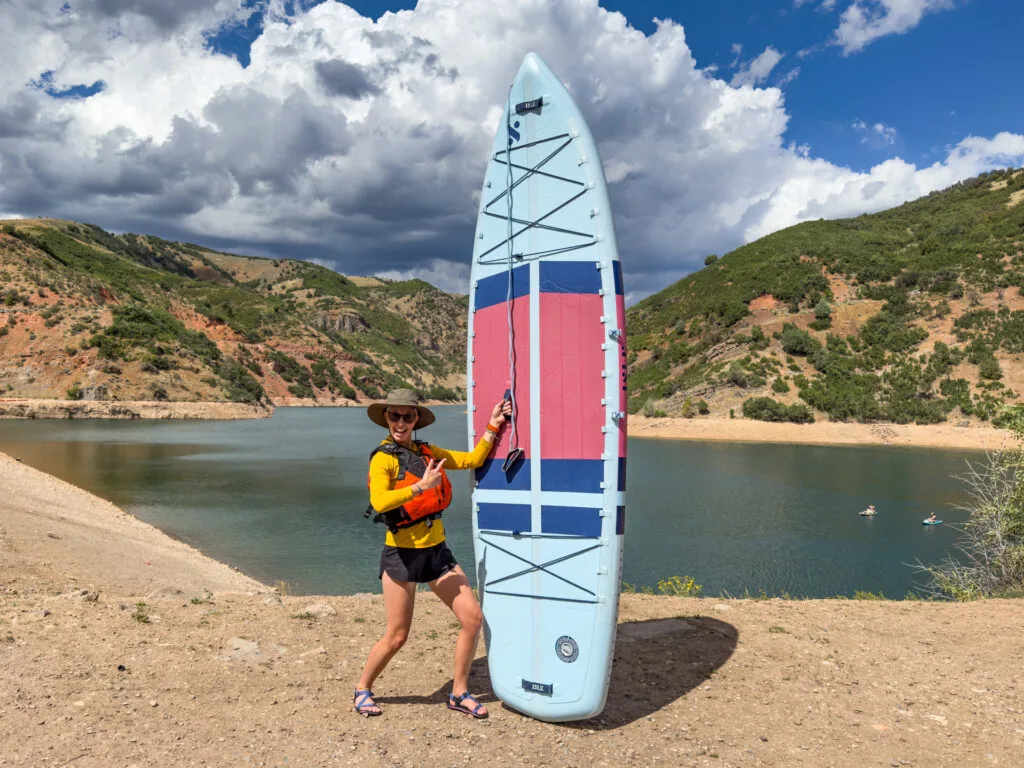
SUP
A SUP is quite a different beast. It’s flat instead of having a curved bottom, which means there’s more surface area in contact with the water, which means it moves slower and is less efficient to paddle. It also means anything you bring with you on the board isn’t stopped from rolling into the water by walls, so everything needs to be fastened down via straps of some kind. But it also means there’s a bit more flexibility with what you can do with the board.
For example, if your balance is on point, you can do a bit of paddle board yoga. You can stand to paddle to really work your core or sit or kneel if not. You can bring your dog along for the ride and more easily lift him or her in and out of the water if they’re a swimmer (just don’t forget their life jacket). Or, if you prefer to take it easy, because it’s a flat surface with no obstructions like seats, it’s much more comfortable to sit or lay down in, just float on(you can even get an anchor system to keep you stationary), or have a picnic in the middle of the water.
As for other design features, SUPs can be inflatable or solid, they utilize a one-sided paddle (similar to a canoe paddle), and typically have grippy pads around the middle so your feet don’t slip and slide all over the place. But they can feel a bit unstable and tippy when you and/or a passenger move around on the board or get on or off into the water (boards are available in smaller sizes for one or longer, wider versions that better accommodate two).
Pros:
- More positions to paddle in (standing, kneeling, sitting, etc.).
- You can stretch out in the sun more comfortably.
- Easier to hop in and out of the water on warm days.
- Easier to bring bulky items like coolers.
- Often easier to carry, inflate, and transport.
Cons:
- Less storage space for gear.
- Less efficient and slower paddling.
- If it’s windy, your body basically acts like a sail, especially if you’re standing.
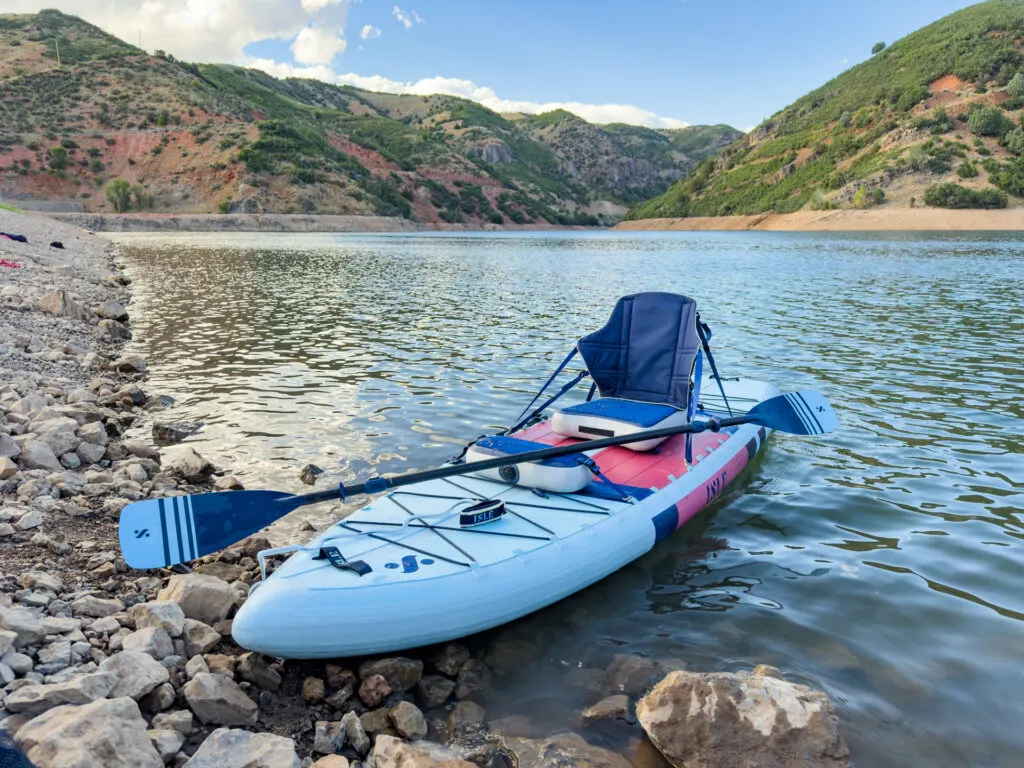
Best of Both Worlds? Isle Switch Compact Review
So is there a best of both worlds? Maybe. We recently tested the Isle Switch Compact, which could be a solid option for those looking for a balance of kayak and SUP features. It’s a paddle board in function and design: a flat, inflatable board that’s ultra-rigid but still stupendously portable, but with a few twists.
For starters, the paddle is multi-functional. Meaning it can go from a single-sided paddle to a double-sided kayak paddle with just one quick swap. Too easy.
And because it’s a SUP, you can choose to stand, sit, or kneel, but there’s also an inflatable seat (with a backrest) and an inflatable footrest you can easily attach to the board so you can sit fully supported and comfortably and paddle the vessel more like a kayak.
That doesn’t mean it has all the features of a kayak, of course. There are still no sidewalls, so you won’t magically have the storage space that often comes with a kayak (inside and outside the kayak body are usually available to stash or lash gear) or walls that keep things inside instead of rolling off the sides. Nor will you have the built-in stability or the efficient curved design of a kayak, but there are other upsides.
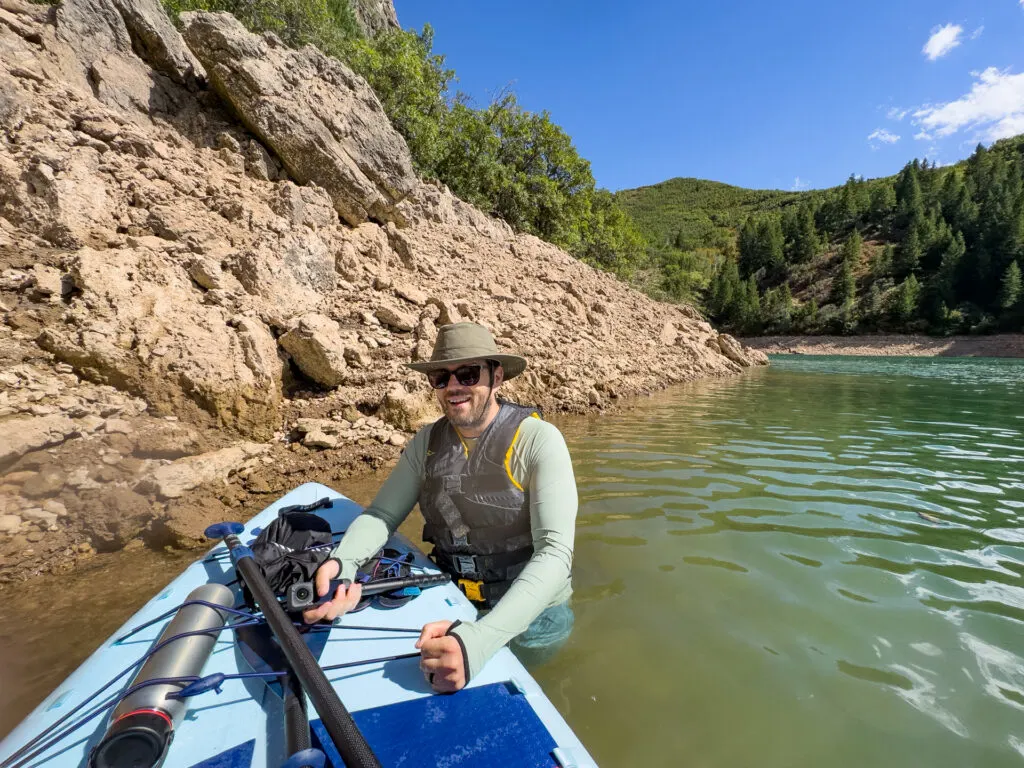
For example, if you like to take a dip every now and then or want to have more space to stretch out and move around, the Switch offers both. All while providing the option to sit and rest in a tolerably comfy and supportive seat. Though it’s easiest to commit to whether you want the seat at the beginning of each outing. You can bring the seat, footrest, and air pump along with you for a mid-adventure swap, but it will take up most of the room on the front or back of the board.
As for capacity, the Switch Compact is designed for one person at just 10’6″ long (the original Switch can more easily accommodate two people at 11’6″ long and a bit wider), but you could fit two small individuals without too much discomfort. The paddling was quite a bit slower with two on board, but doable. Less so with the seat installed, which offered less flexibility regarding how we could comfortably and effectively position ourselves and distribute weight on the board.
But the board is wide enough to feel tolerably stable (though tippier than a kayak, of course), ultra-rigid thanks to the internal drop-stitch design and welded (not glued) side rails that result in longer board longevity, and the dual fins keep it tracking decently straight, at least on a breezy lake. It’s even got a pretty decent turn radius for a boat of this size. Though I will say that on an especially windy day it could be a bit hard to navigate, even if I was seated or kneeling.
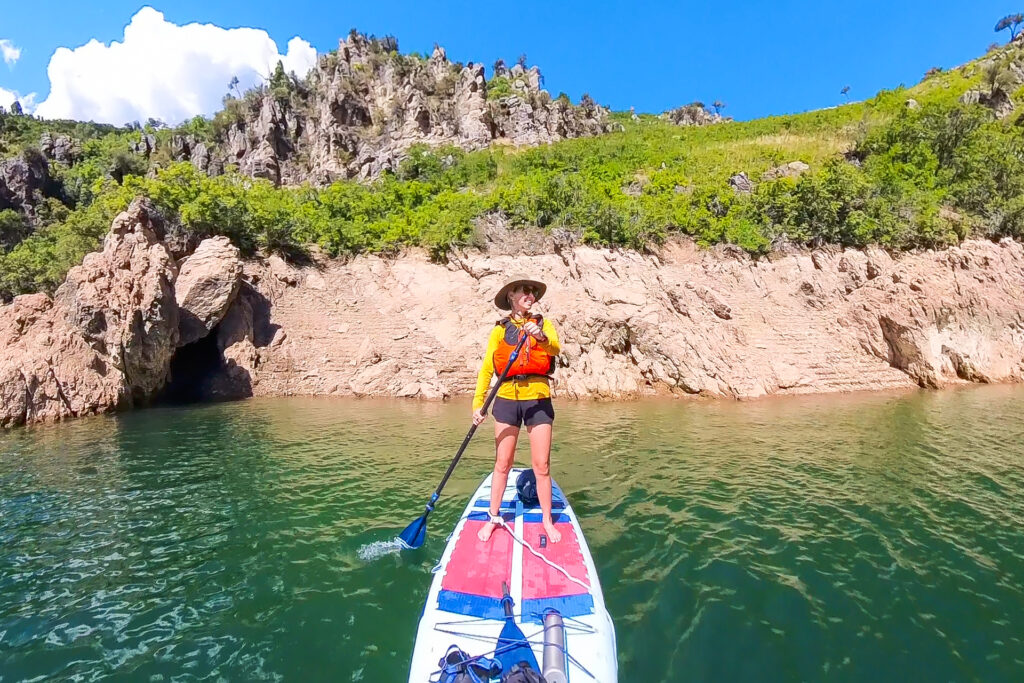
It’s also thoughtfully designed with plenty of useful features, like the Isle Link System, which allows you to not only attach the seat just about anywhere along the board, but also connect other boards to create a flotilla of sorts, plus accessories, bags, and more.
But is it a true SUP or a true kayak? Yes to the former, almost to the latter. Because if it’s speed and efficiency you’re after, even in kayak mode, it’s not going to perform as well as a well-designed kayak. So anytime I want or need to cover ground quickly or when I am traveling as a pair, a kayak is still going to be a much better option in my book (especially because I like to move fast on the water). I’m not going to take the Switch paddle camping, either, because I want more space to store gear and not to have to worry about it rolling into the water.
But if I’m planning a leisurely paddle solo or with a friend (who has their own vessel) or a lazy day by the water, it’ll be Switch all the way, if only because I can stretch out and lounge while also having the option to sit supported and book it across the lake if I really need to. Folks with back problems will also dig having the seat option as it lets you SUP to your heart’s content, but then give your back a break when it starts feeling sore.
Is it the best of both worlds? It’s honestly still pretty dang close, and I can say that unlike a spork, the paddleboard aspect loses no functionality even though it’s not *quite* a true kayak. I would call it a SUP+: Everything you love about a SUP with extras that make it more versatile, comfortable, and efficient. And honestly, I can definitely recommend it to passionate paddleboarders as well as kayakers who are paddleboard curious.
The Isle Switch Compact Deets:
- Comes with a backpack carry case that fits all included accessories.
- Weight: 17 lb board, 34 lb total package.
- Size: 10’6″ (length), 34″ (width), 6″ (thickness).
- 40% smaller packing size than the original Switch.
- Can hold up to 220 lbs.
- 5-year warranty.
- Front and rear bungees.
- Velcro paddle-holder on the side.
- Lockable dual fins.
- Three carry handles.
How it’s sustainable: The Isle Switch Compact (but only in the Ice/Dawn/Navy color, pictured here) is 95% PVC-free. It’s made with TPU instead (PVC is standard for most inflatables). That matters because it means the board’s production avoids most of the highly toxic chemicals involved in PVC production. TPU is also recyclable, though there’s no real way to recycle a board like this yet. Isle is also a 1% for the Planet member, which means at least 1% of all proceeds are donated to environmental non-profits.
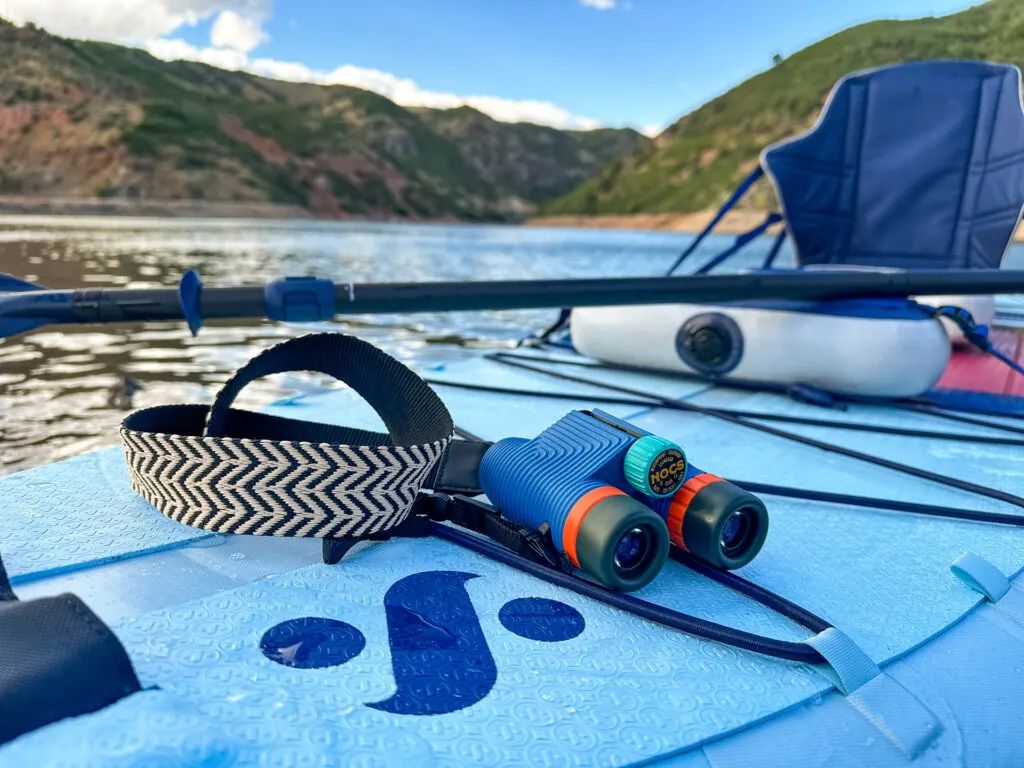
My Favorite Gear to Take Paddling
Of course, whether I’m kayaking or SUP-ing, there are things I wouldn’t consider leaving home without (read a more complete list of kayak necessities in this post).
- Life Jacket: The Astral Ceiba is my new fave for comfort, function and sustainability (it utilizes natural kapok fiber instead of just foam plus recycled materials).
- Waterproof Phone Case: You gotta protect your phone when you’re on the water. We love the waterproof Otterbox Fre, which is made of recycled materials.
- Binoculars: Like spotting wildlife or vistas? Get a pair of durable waterproof Nocs.
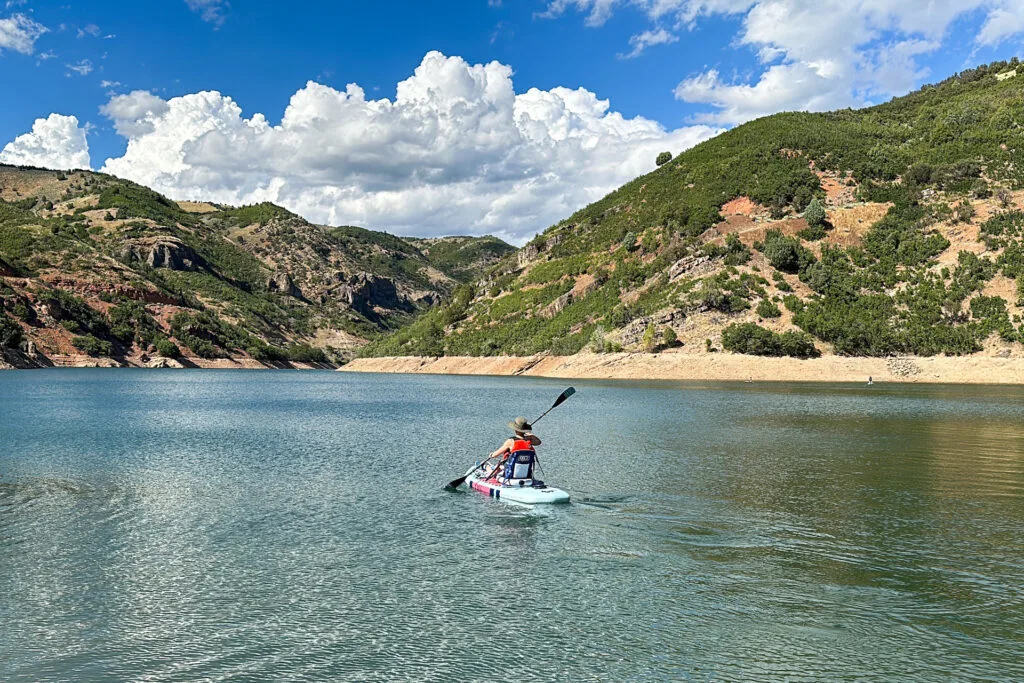
Bottom Line: Kayak vs SUP
Whether a kayak or SUP is right for you comes entirely down to personal preference. But there are a few features that might hint that one is better than the other for the style of paddling you want to do. Like to paddle camp, lug lots of gear, move fast, and stay out of the water (for the most part)? A kayak is just the thing. Prefer to lounge, take your time getting from here to there, and pop in and out of the water as often as you like (and with ease) or try a bit of paddleboard yoga? A SUP is the obvious choice. And if you like the idea of a SUP with the option to have a comfortable and supportive seat and slightly faster way to paddle, consider the Isle Switch Compact, which offers a sampling of both worlds. Whichever you choose, get out on the water and wander on.
Looking for the best swimwear for paddle adventures? Check out our fave sustainable swim trunks and swimsuits for women.
